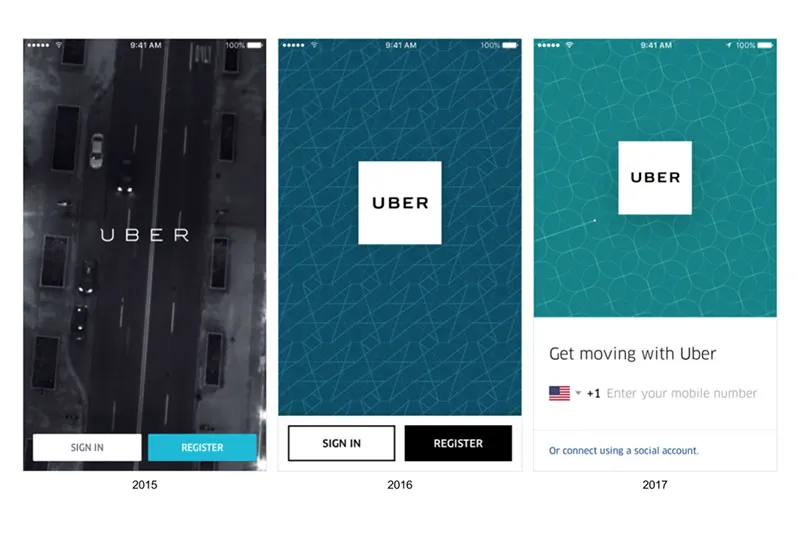Digital Transformation and Digital Adoption
How to Supercharge Customer Onboarding

by
Team Userlane
6 years ago ・ 8 min.- Why customer onboarding is so important
- Different types of users (and their different needs)
- Three phases of retention
- Uniformity in your onboarding process
- Predictability in your onboarding process
- Keeping your onboarding process simple
- Onboarding and continuous improvement
- Importance of user feedback
- How and why to automate customer onboarding

Table of Contents
Why Is Customer Onboarding Important?
Let’s start with this quote from John Jantsch to illustrate in a clear and simple manner why customer onboarding is so important:“If you hold a customer’s hand for 90 days, they’ll be loyal for life.” – John JantschThis statement directly acknowledges the importance of first impressions as well as perhaps people’s tendency to stick with what they know works for them in a kind of “if it ain’t broke, don’t fix it” way. If you can convince your users that your product or service lives up to (and even exceeds) their expectations for the initial onboarding phase, you’ve earned yourself a loyal customer for life (or at least dramatically reduced the likelihood of early churn).
Different Users, Different Needs
There’s no one-size-fits-all onboarding process, although if there is anything universally applicable, it’s the idea that you need to pay attention to your users, understand what they need, and make sure you’re delivering consistent value. It’s also true that onboarding works best when you consider it as a continuous process – not just something that lasts for the first 30 or 90 days after a new sign-up. More on this later. For SaaS and other subscription-based as-a-service companies, each product or service has a highly targeted user profile or demographic grouping. It’s important to recognize the differences between your users so that you can better serve them based on their individual needs. For example, SaaS users can be segmented into three broad categories, namely:Basic (Non-Technical) Users
This is the kind of user with limited tech knowledge: They’re not experts, they’re your typical everyday user. Onboarding for these users should be focused on getting them to grips with basics, delivered in a clear, friendly tone without too much jargon. For this kind of user, you need to quite literally stick to the basics. No complex screen gestures, hidden drop-down menus, or push notifications (at least not yet). Nailing the onboarding experience for basic users like this means they’ll start using your app more because you’re training them to habitually use your app through the positive onboarding experience. Once they’ve found their footing, they’ll be more confident to explore advanced features beyond the onboarding material.Advanced (Technical) Users
Think of these users as the tech-savvy geek types. They will have no problem navigating complex interfaces or in-depth instructions, and almost all UI or app interaction features should be on the table. However, this doesn’t mean you can neglect their onboarding experience – quite the contrary! Advanced users still need attention during the critical onboarding process, and the best way to do this is by providing them with the kind of stimulation more suited to their refined tech-tastes and experience. This could take the form of showing off more of (or all of) your features earlier on and not being afraid of using more jargon to impress them with some of the deeper value propositions off-limits to basic users. Keep in mind, though, rules of the attention economy still apply to advanced users, and for any onboarding experience, keeping your delivery elegant and simple still wins out. You just won’t have to worry about hand-holding them through the whole experience.Enterprise Users
These users occupy something of a middle-ground between basic and advanced with the added rule that they will generally be far more in-tune with what they want out of your software. Onboarding for enterprise users should focus on clearly defining your value proposition and getting them started with applying your software to achieve their business goals. Be ready to offer demo sessions and remember to listen carefully to what enterprise users are telling you they want from your product.
Improving Your Customer Onboarding Process
SaaS heavyweight HubSpot identifies three stages of retention after the conversion of a new customer:- Short-term
- Mid-term
- Long-term
“To make matters worse, our team also discovered that a sizeable cohort of users frequently chose the wrong option, resulting in higher error rates, lower conversion metrics, elevated churn, and an overall inferior onboarding experience.”Uber solved this problem by requesting that the user input their mobile number and by doing the work for them to automatically check if an account already existed. By removing clutter and simplifying the options available to the user in the extremely short-term (the very first interaction within the app!), Uber was able to dramatically improve mid- and long-term retention.

Uniformity = Streamlined Onboarding
Uber’s example clearly illustrates the importance of simplifying the barrier of entry for new users, but during early onboarding, the uniformity of user experience is just as big of a deal. That means application design, web content, writing style, voice, and tone should be coherent and consistent wherever the new user is looking. If you make a statement on your app, especially regarding product features, you had better make sure it reflects in-app. Obvious, right? Well, onboarding is a complex process that is constantly being tweaked and changed in the hunt for the perfect balance of value, accessibility, and delivery. Sometimes, parts of a process need to be changed while other parts are left alone. This is why it’s important to have a clear system for editing and publishing your onboarding content or better yet, your whole onboarding process. Remember that your app is often the first port of call for new users, so the visual impression will have a lasting impact on them. Consider how colors, graphics, animations, and all of the other elements of the app work together across the board. This is what’s called “visual consistency”, and it’s a broad field of research that touches on consumer psychology and graphic and UX design. Key takeaway: Visual consistency will help you gain trust, retain more users, and boost engagement during early-stage onboarding.Predictability Is Key
Hand-in-hand with uniformity sits predictability. Both of these aspects are built upon the foundation of understanding the needs and wants of the end-user. Onboarding content should have a clear profile for the kind of end-user it is targeting. By starting with this kind of user profile, the process of designing content and user interface becomes surprisingly simplified. What does it mean for an onboarding experience to be predictable? It means that you’re able to use your knowledge about different user profiles to anticipate how they will probably react to different elements of the user experience. You can then use this knowledge to ensure their experience fits their expectations. How do you achieve predictability in the onboarding experience? You make sure there is a clear goal that is being met that is in line with the needs and/or wants of the user you’re serving. Key takeaway: Make sure you fulfill user expectations by understanding different user profiles, including why they’re coming to you and what they want from your product.Avoid Over-Actionable Onboarding
By overloading users with info-text, calls-to-action, prompts, and other such onboarding screen clutter, you run the risk of scaring new users away before they’ve even started. If you understand your user profile, and you have a clear goal in mind for their onboarding experience, why suffocate them with over-actionable content? This is starting to sound like a mantra, but keep things simple. To use the example of an in-app UX design: Four or five onboarding screens should be more than enough to get the job done. This is a problem that often happens in terms of user experience, but it also extends to almost all areas of onboarding. You need to remember your onboarding goals and figure out a clear path to hitting those goals without encumbering the user with excess baggage. Is there any way you can simplify key information? Perhaps an image, animation, clever use of product storytelling, or even a 1-on-1 demo! Is it really necessary that the user learns about this feature right now? Maybe that would make more sense a little further down the line? You get the idea. As well as overloading users with calls-to-action, you might also be feeding them more information than they need or can process. Look no further than the classic example of the un-read instruction manual for a perfect analogy of how not to do onboarding. That oppressive, sluggish feeling you get when you’re staring down the hefty pages of an unopened instruction manual for a complex tech device for the first time – that’s exactly what you don’t want your users to feel during the onboarding process. Key takeaway: Keep things simple and remember the onboarding goals. For every piece of information you’re imparting during the onboarding process, consider if it could be simplified or presented more clearly.
Onboarding Never Truly Ends
Lots of companies get onboarding wrong because they think of it as a one-time affair. Focus on the first 30 days and then you’re “done”. In reality, the best kind of onboarding approaches recognize that onboarding is an ongoing process. It doesn’t suddenly “end” after an arbitrary amount of days, and ultimately, the kinds of principles and practices that are enforced during the onboarding process (listening to the customer, understanding their needs, and providing them with value) are all pillars of any user-driven business model. That said, onboarding should still have clear goals and phases to differentiate the early, mid, and long-term – each of these will require different approaches. As mentioned above, the long-term goal of customer onboarding is for your product or software to become part of the habits and processes of the end-user. Of course, this extends the scope of onboarding beyond just the initial in-app sign-ups or feature expositions. Key takeaway: Onboarding is an ongoing process that doesn’t just end after an arbitrary number of days. Maintain clear onboarding goals, and don’t stop paying attention to your users post-onboarding!Pay Attention to User Feedback
The only way you can hope to improve your customer onboarding process is by listening to what your users have to say about it. In keeping with the idea of onboarding as an ongoing process, the principles of continuous improvement could not be more relevant. Developing and maintaining a clear process for customer onboarding that includes measures for recording feedback, implementing changes, and tracking KPIs will mean your onboarding process never goes stale and will always be ready to adapt to the shifting whims of your user base. Prototypes and A/B tests are your friends; keep testing, tweaking and optimizing for a continuous improvement approach to customer onboarding. Send your customers surveys asking for feedback on the onboarding process. You can use a simple solution like Google Forms or SurveyMonkey.Just keep in mind that the approach isn’t as important as the feedback you are getting from your customers. Don’t stop at onboarding. Seeking feedback to improve your business processes is a key principle of continuous improvement, which can be applied to all areas of your business. An effective way to approach continuous improvement is to consider what parts of your business process can be automated.
Automating Customer Onboarding for Success
Customer onboarding is a process that you’ll find yourself repeating again and again – for each new user, in fact. That doesn’t even factor in the time you’ll spend tweaking and optimizing the actual process. All in all, that’s a lot of recurring tasks! Now consider how many of those tasks are simple, manual jobs like data entry, or email follow-ups, or sending welcome content. It all adds up to a whole lot of repetitive manual work. Have you ever considered how you could automate all of that? By automating your customer onboarding process, you can drive down costs, boost success rate, and increase process efficiency in your business. You’ll also reduce human error because there’ll be less manual work for errors to arise from! So how do you actually get started with automation? Start by understanding that automation isn’t a one-size-fits-all solution; you can (and should) find different ways to automate pretty much anything. Some ideas include using email templates to speed up your onboarding response time, creating an integration between your common work apps with a tool like Zapier, or even using a BPM software like Process Street to automate recurring tasks in your onboarding process for you. It’s also worth noting that automation alone won’t solve all your problems. If the process itself isn’t solid, then there’s not much automation will do for you. So if there is one thing you take from this article, let it be this: Focus on the process! Whether you’re automating your customer onboarding or not, the key principles remain the same: By putting your customers first and making sure you understand the holy trinity of users, their needs, and the value you can offer them, you’ll be golden. For a more in-depth look into user onboarding and how you can make sure that your users get an optimal user experience, you can download our free user onboarding guide. Visit our knowledge hub for more helpful resourcesNew to Userlane? Take a step in your software adoption journey and join the pool of our happy customers.
About the author:
The Userlane team brings you digital adoption insights, product updates, and plenty of onboarding and engagement advice for user-centric businesses.

